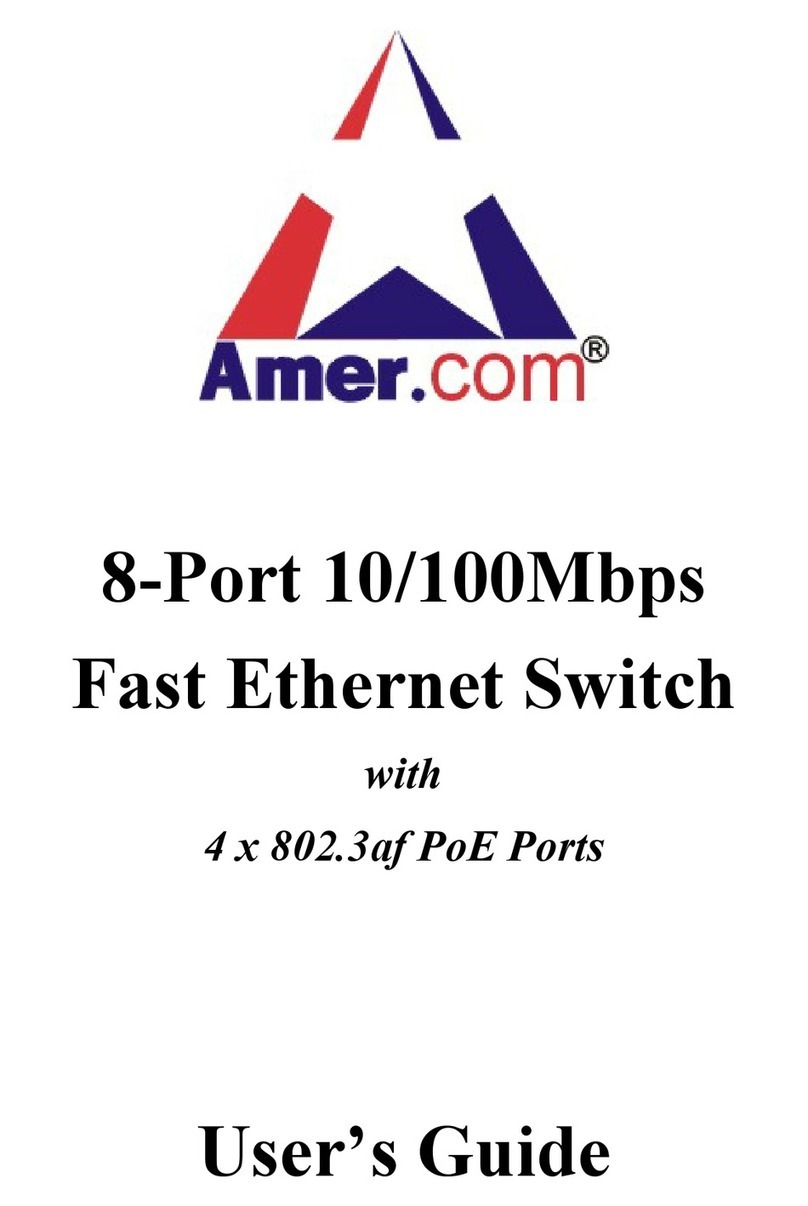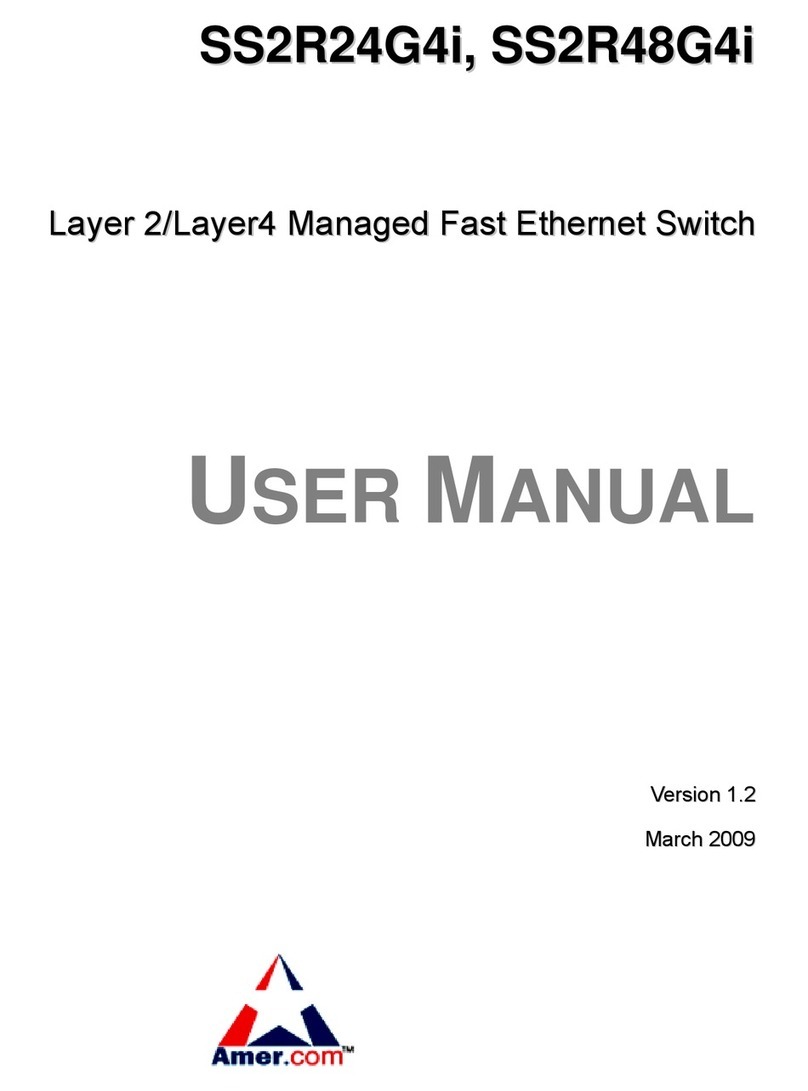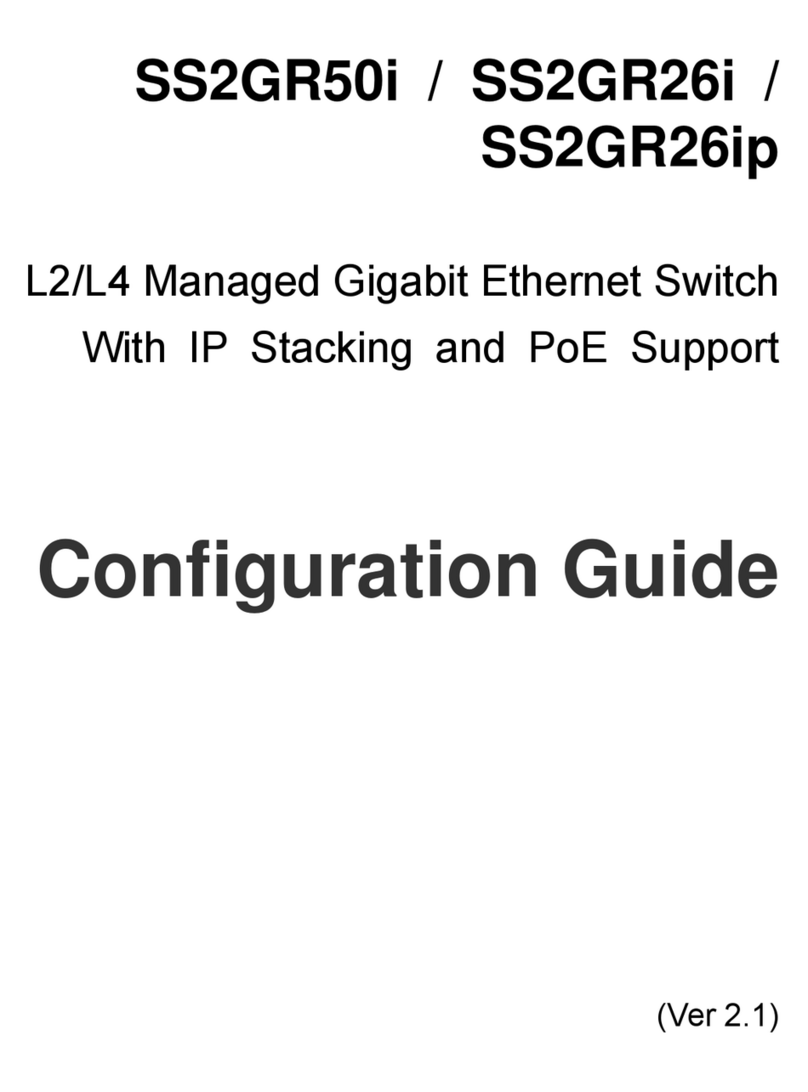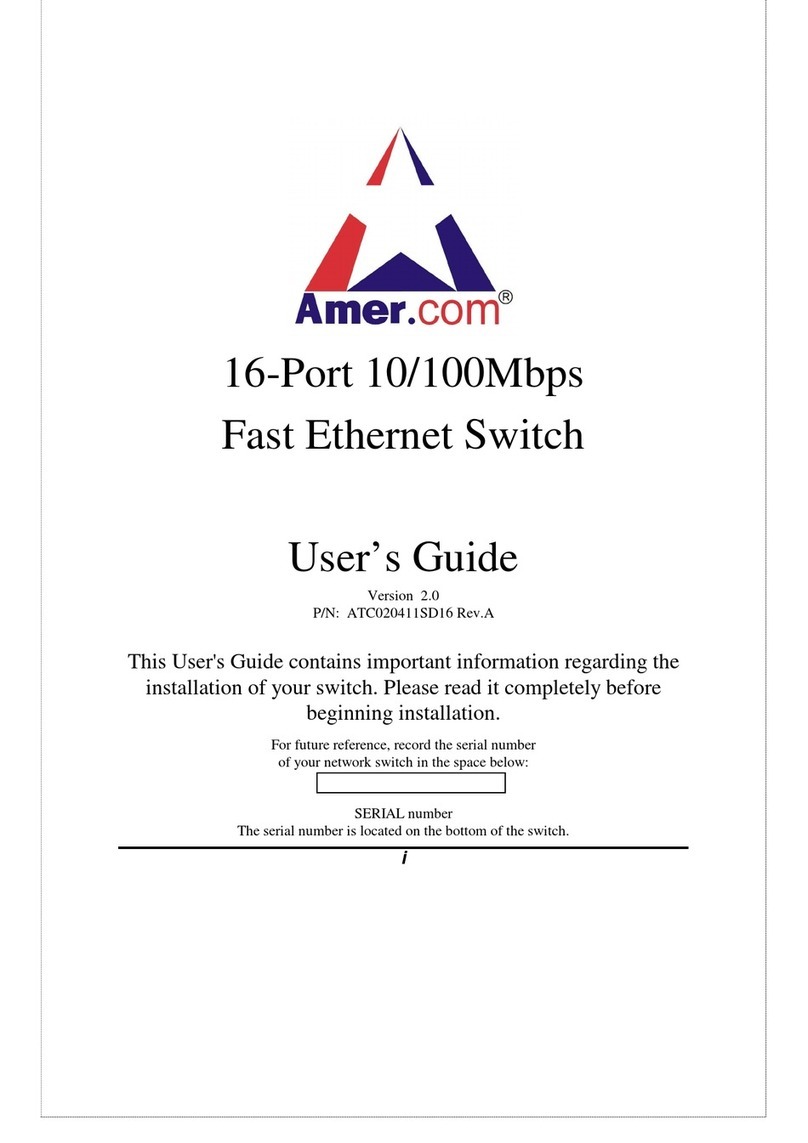
Chapter 12 QoS Configuration............................................................................................. 107
12.1 Introduction to QoS .................................................................................................... 107
12.1.1 QoS Terms..............................................................................................................107
12.1.2 QoS Implementation...............................................................................................108
12.1.3 Basic QoS Model....................................................................................................109
12.2 QoS Configuration Task List....................................................................................... 112
12.3 QoS Example............................................................................................................. 116
12.4 QoS Troubleshooting ................................................................................................. 118
Chapter 13 PBR Configuration............................................................................................. 119
13.1 Introduction to PBR.................................................................................................... 119
13.2 PBR configuration ...................................................................................................... 119
13.3 PBR examples ........................................................................................................... 119
Chapter 14 Flow-based Redirection ....................................................................................121
14.1 Introduction to Flow-based Redirection...................................................................... 121
14.2 Flow-based Redirection Configuration Task Sequence.............................................. 121
14.3 Flow-based Redirection Examples............................................................................. 122
14.4 Flow-based Redirection Troubleshooting Help........................................................... 122
Chapter 15 L3 Forward Configuration................................................................................. 124
15.1 Layer 3 Interface ........................................................................................................ 124
15.1.1 Introduction to Layer 3 Interface ............................................................................. 124
15.1.2 Layer 3 Interface Configuration Task List ...............................................................124
15.2 IP Configuration ......................................................................................................... 125
15.2.1 Introduction to IPv4, IPv6 .......................................................................................125
15.2.2 IP Configuration......................................................................................................127
15.2.3 IP Configuration Examples .....................................................................................133
15.2.4 IPv6 Troubleshooting..............................................................................................137
15.3 IP Forwarding............................................................................................................. 137
15.3.1 Introduction to IP Forwarding..................................................................................137
15.3.2 IP Route Aggregation Configuration Task............................................................... 138
15.4 URPF ......................................................................................................................... 138
15.4.1 URPF Introduction..................................................................................................138
15.4.2 URPF Configuration Task Sequence...................................................................... 139
15.4.3 URPF Troubleshooting ...........................................................................................139
15.5 ARP............................................................................................................................ 140
15.5.1 Introduction to ARP.................................................................................................140
15.5.2 ARP Configuration Task List...................................................................................140
































